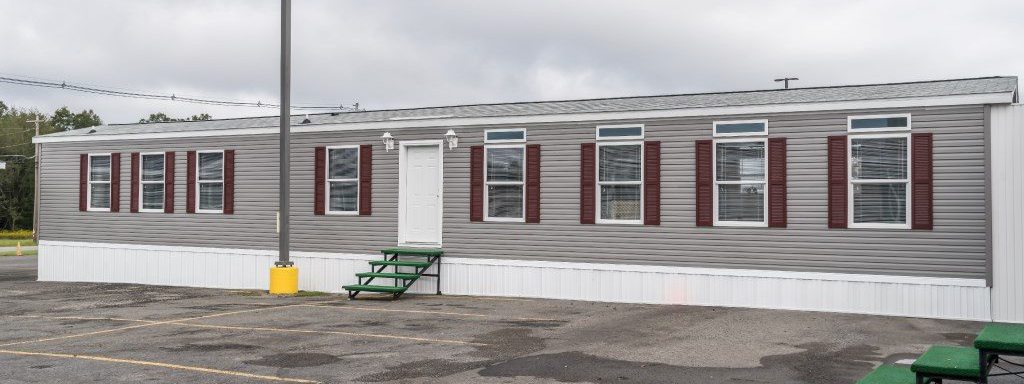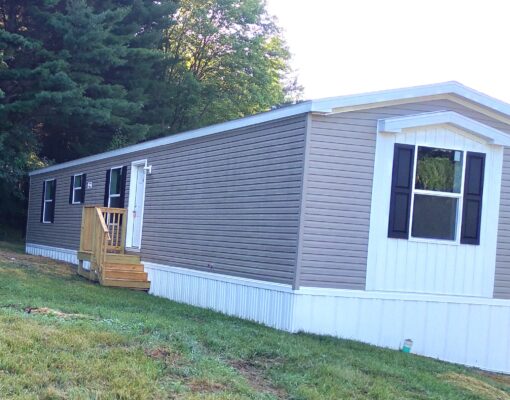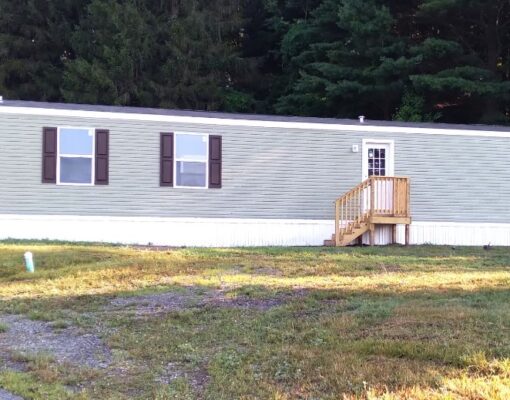Manufactured Home Delivery and Assembly

The delivery of your manufactured home to your location is generally included in the pricing of your home initially unless you are choosing a location 50 miles or more from one of our locations.
By Federal Law, your dealer cannot place a home on a site that is not in compliance with either the manufacturer’s specifications or local building codes. Additionally, the worker and equipment fee to clear the site where the home will be placed and clear the access to the site may be an additional expense to the homeowner as well.
Similar to modular home delivery, you will need to be sure that the route from the manufactured home lot to your location does not include impassable obstacles. This includes bridges, steep hills, extremely winding roads, etc. Many retailers and transport companies will take care of the route planning for you since they are ultimately the experts and know the exact dimensions of the home. Not only do routes need to be planned to avoid obstacles, but there are also laws preventing the traveling of oversized loads during certain times of the day and night depending upon your area.
The homebuyer is responsible for placing corner markers on the location at the exact point where the home will be placed. This helps the excavator to place the foundation system in its’ proper place, taking into account any setbacks ordered by the zoning authority. It’s important that the markers are placed because if not place properly, additional time and expense can be accrued due to site work having to be re-done.
If your site has a steep drop off near the end of where the home is being placed, it may be necessary to build a level area approximately 25’ in length. This area will allow the delivery vehicle enough room to maneuver your home into place.

It is very advisable to have your dealer view the property before purchasing your new home. Many homes can be built with a flip or mirrored floor plan to avoid additional expenses such as this extra preparation. We include site checks as part of the buying process.
Manufactured Home Assembly Process
Your installer is responsible for making sure that your home is assembled correctly. In order for your HUD-code home installation to be certified in PA, the home must be installed according to the manufacturer’s instructions to make it weather resistant, wind resistant, and have properly installed and functioning utilities. It’s important that the installer follow the assembly process closely to ensure the home is safe and secure.
A manufactured home is usually placed on cement pads, or piers, placed at measured intervals and lined up with the frames of your home. To stabilize the home, the installer must properly anchor the home with the recommended stability devices and guaranteed that those stability devices are accurately installed.
There are absolutely no shortcuts when it comes to home installation. Your manufacturer or home retailer may have alternate methods of home installation, but all must comply with HUD code. If your home retailer or manufacturer suggests an alternative or a way to “save money,” that is a big red flag and you should speak to your home retailer to resolve the issue.
Once your home is assembled and construction is deemed completed, your installer is given a checklist to identify that every aspect of home building, delivery and set-up was done to HUD and local code. The checklist is given to the building code officer to complete the building permit process.
As you see, there are multiple steps that you must complete before moving into your new manufactured home. While it might be a little intimidating, your manufactured home dealer should be able to guide you through each phase of the project.
Final Inspection
Just like any other home, a new manufactured home must be inspected before you can fully move in. In the case of a manufactured home, it has to pass a HUD inspection.
As previously mentioned, the skirting must be installed to the manufacturer’s specifications and the home must be anchored properly to the property. The inspector will also inspect utility hook-ups as well as decks, porches, step, service equipment, etc.
Once the inspection is completed and the house passes, the inspector will issue you a Certificate of Occupancy and you will be permitted to move in and enjoy your new home.




